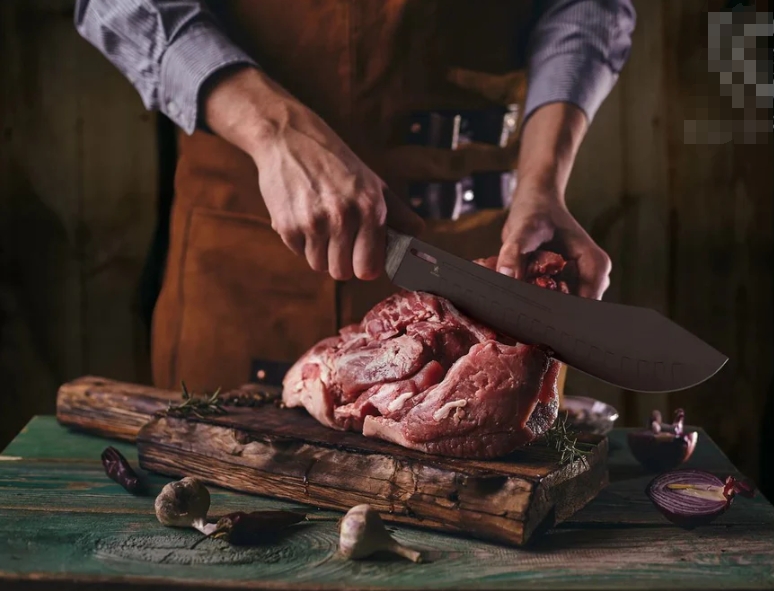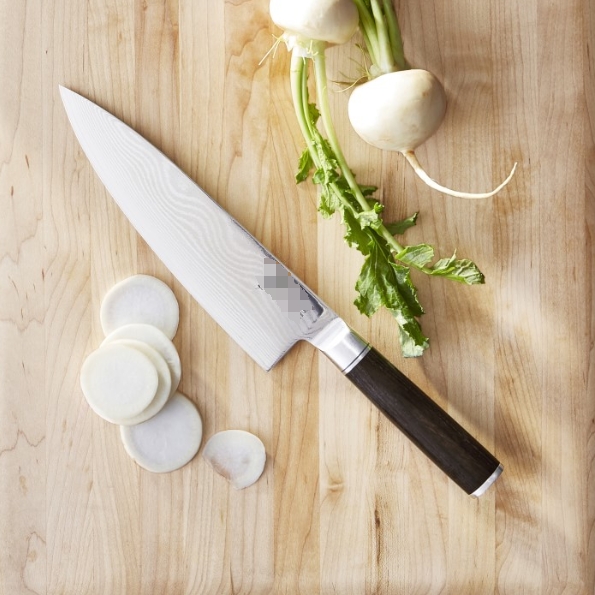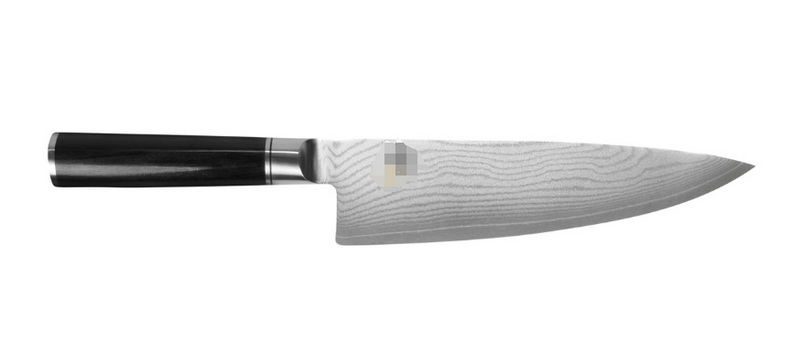

Views: 222 Author: Ella Publish Time: 2025-04-29 Origin: Site








Content Menu
● Understanding the Unique Demands of Cutting Fish
● Types of Kitchen Knives for Cutting Fish
>> Fillet Knife
>> Salmon Knife
● Comparing Top Fish Knives: Western vs. Japanese Styles
● Choosing the Right Blade Length and Flexibility
● Handle Design and Material: Safety and Comfort
● Electric vs. Manual Fish Knives
● Step-by-Step: How to Fillet Fish Like a Pro
● Knife Maintenance and Longevity Tips
● Advanced Knife Skills for Fish Preparation
● Common Mistakes and How to Avoid Them
● Knife Storage Solutions for Fish Knives
● FAQ: Top 5 Questions About Fish Knives
>> 1. What's the difference between a fillet knife and a boning knife?
>> 2. Can I use a chef's knife to cut fish?
>> 3. How do I choose the right blade length for my fish knife?
>> 4. What's the best way to keep my fish knife sharp?
>> 5. Are electric fillet knives worth it?
Selecting the perfect kitchen knife for cutting fish is both an art and a science. Whether you're a home cook preparing salmon fillets or a sushi enthusiast seeking precision, the right knife transforms your experience-delivering clean cuts, preserving delicate textures, and maximizing yield. This comprehensive guide explores the characteristics, types, and care of fish knives, complete with visual aids and instructional videos to help you master the craft.

Fish present unique challenges in the kitchen: their flesh is delicate, bones are fine and intricate, and skin can be tough or slippery. A standard chef's knife, while versatile, often lacks the flexibility and precision required for efficient fish preparation. This is why specialized fish knives exist-to help you:
- Remove skin without tearing the flesh
- Cut along bones with minimal waste
- Portion fillets with clean, even strokes
A great fish knife is defined by several key features:
- Blade Flexibility: Allows the knife to glide along bones and contours, minimizing waste.
- Sharpness: Essential for clean cuts through delicate flesh.
- Corrosion Resistance: Fish preparation is a wet task; stainless steel or treated blades resist rust.
- Length and Shape: The right blade length and curvature enhance control and efficiency.
- Handle Grip: Non-slip, ergonomic handles ensure safety even when wet.
The best fish knives are designed to handle the intricacies of fish anatomy. Their blades are typically narrower than those of general-purpose knives, which allows for more precise maneuvering around bones and under the skin. The flexibility of the blade is crucial, as it enables the user to make long, sweeping cuts that follow the natural contours of the fish, minimizing waste and preserving the integrity of the fillet.
Several knife types are purpose-built for fish, each excelling at different tasks:
- Blade: Thin, narrow, and highly flexible.
- Purpose: Removing skin, deboning, and producing thin fillets.
- Common Lengths: 6–9 inches.
- Best For: Most species of fish, especially when precision is needed.
- Blade: Thick, heavy, and single-beveled.
- Purpose: Cutting through small bones and heads, initial breakdown of whole fish.
- Best For: Japanese cuisine, whole fish butchery.
- Blade: Long, slender, and very sharp.
- Purpose: Slicing sashimi or sushi in a single, clean motion.
- Best For: Raw fish, sushi, and sashimi preparation.
- Blade: Extra-long (up to 12 inches), very flexible, rounded tip.
- Purpose: Slicing thin, even pieces of smoked or raw salmon.
- Blade: Reciprocating, serrated, interchangeable lengths.
- Purpose: Speed and ease when processing large quantities of fish.
- Best For: Anglers, bulk preparation.
| Feature | Western Fillet Knife | Japanese Deba/Yanagiba |
|---|---|---|
| Blade Flexibility | Very flexible | Deba: stiff, Yanagiba: semi-flexible |
| Blade Thickness | Thin | Deba: thick, Yanagiba: thin |
| Typical Length | 6–9 inches | Deba: 6–8 inches, Yanagiba: 9–12 inches |
| Best Use | Filleting, skinning | Deba: butchery, Yanagiba: slicing sashimi |
| Maintenance | Easy to sharpen | Requires skill to sharpen |
| Handle | Ergonomic, textured | Traditional, wood or composite |
Western fillet knives are prized for their flexibility and ease of use, making them ideal for home cooks and professionals alike. Japanese knives, on the other hand, are revered for their craftsmanship and are often used in professional kitchens for their specialized functions.
Blade Length
- 5–7 inches: Ideal for small fish (trout, panfish).
- 8–9 inches: Versatile for medium to large fish (bass, salmon).
- 10–12 inches: For very large fish (tuna, swordfish).
Flexibility
- More Flexible: For delicate filleting, skinning, and small fish.
- Stiffer Blades: For larger fish or when cutting through tougher skin and bones.
Selecting the right length and flexibility is crucial. A blade that is too short may not reach all the way through a large fish, while a blade that is too long can be unwieldy when working with smaller species. The right balance ensures both efficiency and safety.
A secure grip is vital when working with slippery fish. The best handles feature:
- Textured Rubber or Polypropylene: Non-slip, even when wet.
- Ergonomic Shape: Reduces hand fatigue during repetitive tasks.
- Finger Guards or Bolsters: Added safety for beginners and pros alike.

| Feature | Electric Fillet Knife | Manual Fillet Knife |
|---|---|---|
| Speed | Very fast, efficient | Slower, more control |
| Skill Required | Minimal | Moderate to high |
| Maintenance | Needs charging, cleaning | Simple cleaning, sharpening |
| Portability | Bulky, needs power | Lightweight, portable |
| Best For | Large batches, big fish | Precision, small/medium fish |
Electric fillet knives are a game-changer for those who process large quantities of fish, such as anglers or commercial kitchens. They can make quick work of even the largest catches, but they do require access to power and regular maintenance.
1. Lay the Fish Flat
Secure the fish on a cutting board.
2. Initial Cut
Insert the tip of your fillet knife behind the gills at a 45-degree angle, cutting down to the backbone.
3. Follow the Spine
Turn the blade flat and slice along the backbone toward the tail, keeping the blade as close to the bones as possible.
4. Remove the Fillet
Lift the fillet as you cut, using gentle, sawing motions.
5. Skin Removal
Place the fillet skin-side down. Hold the tail end, insert the blade between skin and flesh, and glide the knife forward while pulling the skin taut.
6. Repeat
Flip the fish and repeat for the other side.
Proper care ensures your knife stays sharp, safe, and rust-free:
- Clean Immediately After Use: Wash with warm water and mild soap.
- Dry Thoroughly: Prevents rust, especially on high-carbon blades.
- Sharpen Regularly: Use a honing rod or sharpening stone to maintain the edge.
- Oil the Blade: Apply food-grade mineral oil for extra corrosion protection.
- Store Safely: Use a sheath or knife block in a dry area.
Mastering advanced knife techniques can elevate your fish dishes to a professional level. Here are a few skills to develop:
- Pin-Boning: Use tweezers or the knife tip to remove tiny pin bones from fillets, ensuring a smooth eating experience.
- Butterflying: Skillfully open a whole fish or fillet for stuffing or presentation.
- Sashimi Slicing: Achieve paper-thin, even slices for raw fish dishes using a Yanagiba or similar slicer.
- Portioning: Cut fillets into uniform portions for even cooking and attractive plating.
Even experienced cooks can make mistakes when preparing fish. Here are some common pitfalls and how to avoid them:
- Using a Dull Knife: This increases the risk of tearing the flesh and causing accidents. Always keep your knife sharp.
- Applying Too Much Pressure: Let the sharpness of the blade do the work. Excessive force can damage the fillet.
- Improper Angle: Maintain the correct angle to maximize yield and minimize waste.
- Neglecting Safety: Always cut away from your body and keep your fingers clear of the blade.
Proper storage extends the life of your fish knife and keeps your kitchen safe:
- Magnetic Knife Strips: Keep blades accessible and dry.
- Knife Blocks: Protect the edge from damage.
- Blade Guards/Sheaths: Ideal for drawer storage or transport.
- Knife Rolls: Perfect for chefs on the go.
The ideal kitchen knife for cutting fish is one that matches your needs, fish size, and skill level. For most home cooks, a 7–9 inch flexible fillet knife with a non-slip handle offers the best balance of precision, safety, and versatility. Japanese knives like the Deba and Yanagiba excel in specific tasks for whole fish but require more skill and care. Electric knives are invaluable for high-volume processing. No matter your choice, proper maintenance is key to performance and longevity. Invest in the right knife, and every fish you prepare will be a testament to your skill and respect for the ingredient.

A fillet knife is thinner and more flexible, designed specifically for working around fish bones and skinning fillets. A boning knife is stiffer and better suited for separating meat from larger bones in poultry or red meat.
While a chef's knife can portion fish, it lacks the flexibility for precise filleting and skinning. For best results and minimal waste, use a dedicated fillet knife.
Match the blade length to the size of fish you most often prepare: 5–7 inches for small fish, 8–9 inches for medium, and 10–12 inches for large species.
Regularly hone the blade with a sharpening rod and periodically use a whetstone. Clean and dry the knife after each use to prevent dulling and corrosion.
Electric fillet knives are excellent for processing large quantities of fish quickly and with less effort. They are especially useful for anglers or anyone preparing big catches, though they are bulkier and require power.